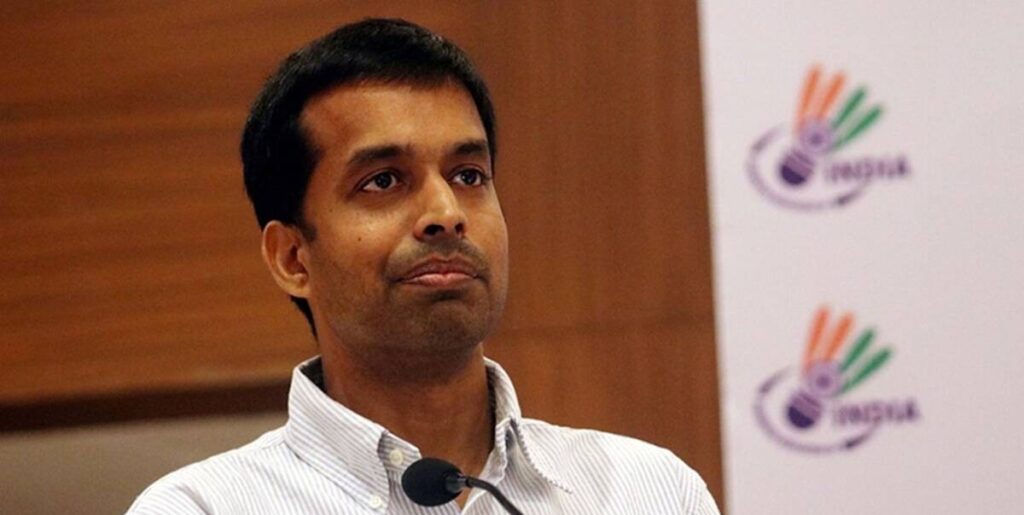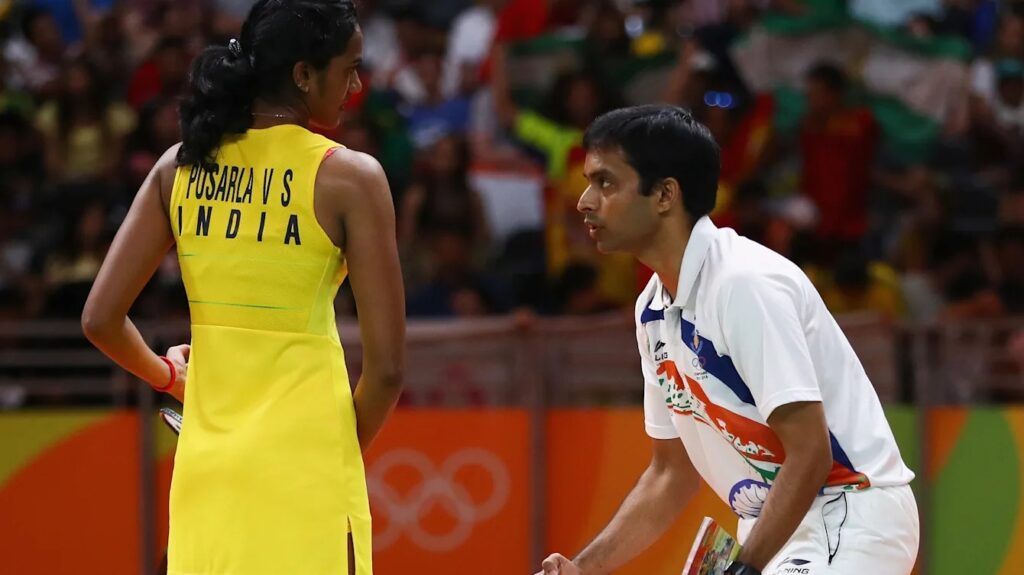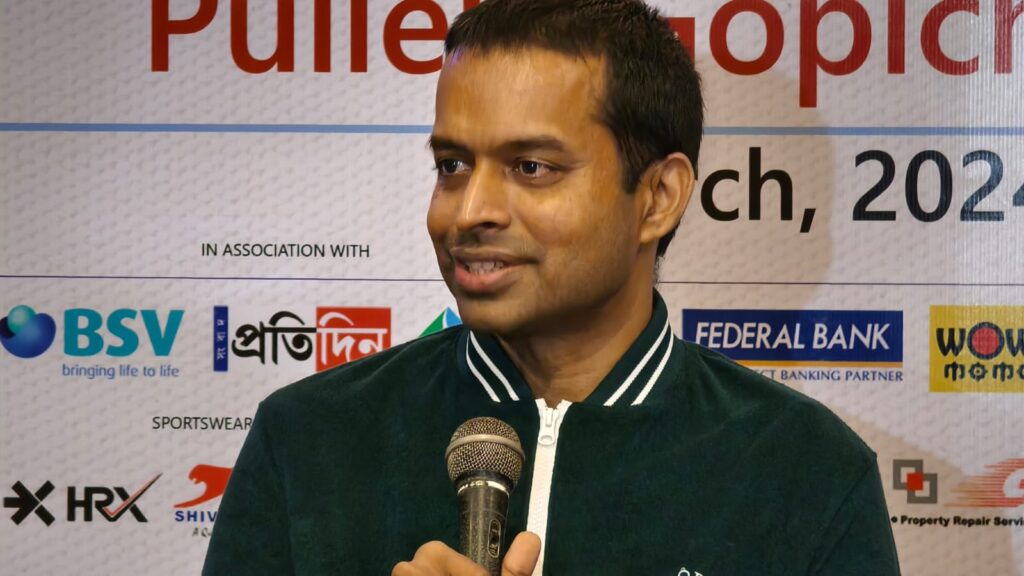
PV Sindhu had just won her quarterfinal in Rio in 2016 against the legendary Wang Yihan of China and all of us, members of the Indian media contingent, were euphoric. One more win and Sindhu could finally end India’s medal drought. It was late evening in Rio that same day when I met Gopi at the gate of the Olympic Games village. It was past 9pm and I had just finished a round of interviews with some of our boxers. Gopi was alone and was pacing up and down rather aimlessly. He hadn’t seen me and was somewhat surprised when I walked up to him.
I had known Gopi for years, and rarely had I seen him as anxious or as frail. “Let’s talk after the match tomorrow, Boria,” he said when we were face to face. “I am tired of Indians coming fourth. I really can’t take another fourth-place finish. If she wins tomorrow, she is sure of a medal and once that happens I will come with you to Christ the Redeemer and celebrate.” Gopi was in full flow. “I have not smiled properly for months now,” he said. “Lost 8-10 kilograms in the last few months for this one day. Time we win a medal.” He tailed off before walking back inside the village, leaving me with many unasked and unanswered questions.
I had followed Gopi closely leading up to the Olympics and could immediately relate to what he was saying. Everything that he tried out was self-taught, for there was no model in front of him. Trial and error and experiment, hoping it would work, but at the back of it all was science and a desperate will to succeed.
So how does he produce a champion, I had asked him once. I was aware that the question didn’t have a straightforward answer. It is no mathematical formula, for then it would be replicated by every country that could afford it.
For the Latest Sports News: Click Here

“What do you understand by a champion?” Gopi asked me in return. And before I could say a word, he started speaking. “By a champion, I understand a player who knows how to keep winning consistently. To know how to win is an art. Everyone at this level can play well. But not everyone knows how to win. At 17-17, you need to be a little more than a good player to close out the game. That’s something I think I am good at, and do from behind. That’s what helped me nurture these players. That’s what was missing in India, and that’s what I have tried to learn over the years. Once they learn the process, I will move on to working on younger men and women who will need to be groomed going ahead.”
Very Gopi. Straightforward and simple. Decoding the process as if it wasn’t something really difficult.
“The process, as I have said to you, is what is most important,” he added. “All people see is what they do in tournaments. Sindhu was hailed for playing a 100-minute match at the 2017 Glasgow World Championships. Saina [Nehwal] has managed to play at the highest level for a decade and more. Satwik and Chirag are doing it now. This is because they train close to five hours most days, spread into two halves – morning and evening. They play long rallies, simulate match situations, practice particular strokes they need to improve on. That’s why, in match situations, they aren’t flustered anymore.”
How he knew all this was what interested me. Before Gopi, it was Prakash Padukone in the 1980s, and then the occasional Syed Modi or Vimal Kumar or Dipankar Bhattacharyya. None of them were world-beaters and there was no tradition and no real structure. Gopi’s academy, in the true sense, came out of nowhere. May be that’s why in the first four years, not a single sports journalist entered its confines. “Yes, between 2004 and early 2008, the media wasn’t interested,” he said. “No one came and no one was really following what I was trying to do or was doing. Not that it mattered because I could do my initial planning away from the glare of cameras, which is actually not such a bad thing.”

Things have not been easy for Gopi. From mortgaging his house to raise money for the academy, and also dealing with his mother’s cancer, every step of the way has been a first in the history of Indian sport. And yet, he stays humble and modest, something that won’t change even if he manages to get India another medal in Paris, and this time in the doubles.
Frankly, nothing much will happen as far as Gopi is concerned. I can actually guarantee things won’t change. Even days after winning the medal with Satwik and Chirag, Gopi will still be at the academy at 5am in the morning, racket and shuttle in hand, trying to think how to improve further. The next Super Series is a month away, he will say. “The goal is not medals, you know,” he will add. “Medals are just one aspect of the story. Sport helps us in a number of intangible ways. It helps us become better men and women and, most importantly, deal with crisis better.
“When you fail an exam, you don’t come out of your homes and, in extreme cases, commit suicide. Sport gives you multiple chances. Your loss is public, so you can’t really run away from it. All you do is pull yourself up, seek family support and come back the next morning trying to rectify our mistake. And when you do so, you are already a winner. Everyone who plays sport is a winner. Not always do you have to win medals. If we all come to terms with this aspect of sport, we would be a better society.”
What he left unsaid was that we would also create champions in the process. But I know why he didn’t say that. It is because champions are never satisfied. And Gopi, in every sense, is one. A man who will leave behind a legacy that he himself created and nurtured, and one that generations will follow.
Also Read: “Creating a Mini India for Our Athletes” – PT Usha ahead of Paris Olympics 2024



